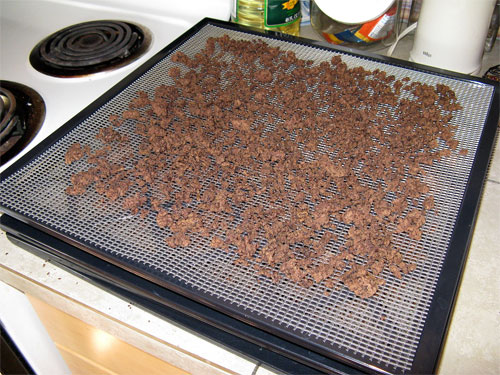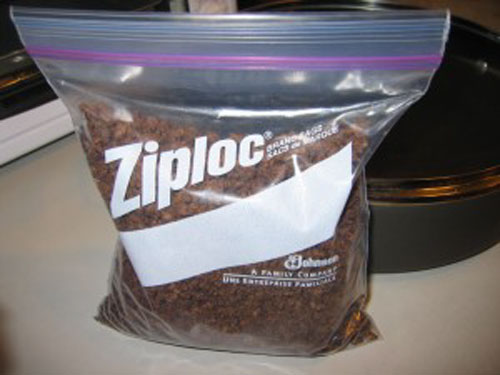Dehydrated Hamburger “Rocks” for Long Term Meat Storage
This is a great way to store hamburger for long periods of time or as a portable hiking component of meals. Once prepared it only requires a cool, dry place safe from pests. If properly prepared and stored, they can last up to two years. Rehydrated as needed, Hamburger Rocks are perfect for tacos, spaghetti sauce, hamburger helper, tamale pie, lasagna and any other recipes calling for lean ground beef. You can start with regular ground hamburger but ground rump and pot roast yields a slightly superior product. My advice is to make your first batch with regular ground hamburger then try other combination as your budget, sales and tastes dictate. If you’re feeling truly experimental, you can try hunting/game animals such as rabbit and venison. These are generally much leaner than domesticated stock so be sure to let us know how it turns out.
Starting with five pounds will yield about one quart of Hamburger Rocks. While this may sound like a lot, do not be alarmed. Animal tissue is primarily liquid and removing that liquid is our goal when preparing food for storage in this manner.
A large cast-iron skillet is best, but any type will suffice. Fry your ground beef at a medium-high heat until browned. We aren’t in a hurry here.
Drain off a much of the grease safely manner and feel free to use it in other cooking applications or dispose of it in a responsible manner.
Transfer the meat to a metal or high temperature plastic colander. Rinse under hot running water to remove additional fat and grease. While the meat is still in the colander wipe down the skillet with paper towels and keep it handy. Transfer the washed beef back into the skillet.
Fry the beef again over medium-low heat, stirring often until you see no more steam. Keep the heat low at this point to prevent burning. They should be thoroughly brown at this point but NOT blackening. Our goal here is to drive off water from the rinsing project.
 |
Place the “twice cooked” rocks into an oven roasting pan, spreading them as evenly and thinly as possible to increase surface area. Turn the oven to 200 degrees F, stirring and turning occasionally as the meat continues to dry. If your oven does not vent moisture well, leaving the door cracked will help with this preliminary drying. One to two hours should finish the job in most cases, but use your common sense. Remove from the oven and check for dryness. Allow to cool. Additional drying can be achieved with a home food dehydrator if desired.
Once cooled and dried, pack into zip lock bags or, better yet, mason jars. Pack tightly, expelling as much air as possible. Hardcore food preservers may use air evaluators or oxygen absorbers. The final product stores well in pantries, dry basements, root cellars and kitchen shelves. Rehydrate portions as needed by soaking one cup of rocks in two cups of boiled water, the pre-cooked meat can be used in any recipe.
 |
Further Research:
  |
Leave a Reply